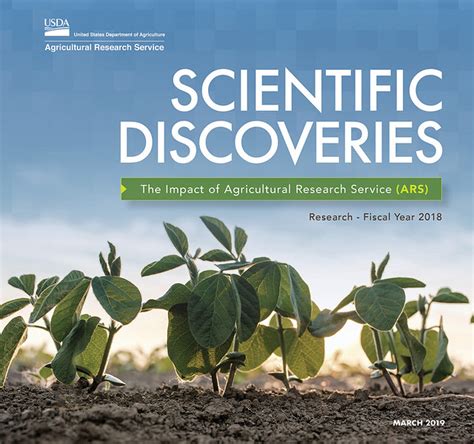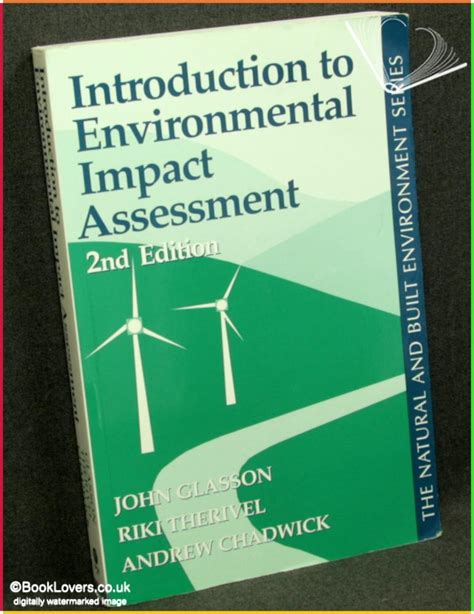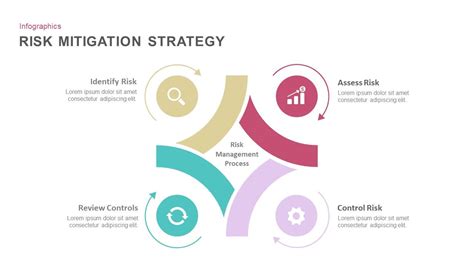Breaking News


Popular News


Explore the environmental impact of key scientific discoveries, learn about mitigation strategies, and discover the potential for sustainable scientific innovation in this insightful blog post.In today’s fast-paced world, scientific discoveries are constantly pushing the boundaries of human knowledge and innovation. While these breakthroughs have brought about many benefits to society, they have also raised significant concerns about their impact on the environment. As a result, there is a growing need to analyze and understand the environmental implications of these scientific advancements.
In this blog post, we will delve into the critical issue of analyzing the environmental impact of scientific discoveries. We will begin by providing an introduction to environmental impact analysis, exploring the various methodologies and frameworks used to assess the effects of scientific innovations on the Earth. From there, we will identify key scientific discoveries that have had a significant environmental impact, shedding light on the potential risks and consequences associated with these developments. Additionally, we will discuss the assessment of environmental effects and the potential for sustainable scientific innovation, as well as mitigation strategies and solutions to minimize the ecological footprint of these discoveries. Join us as we explore the complex relationship between scientific progress and environmental sustainability.
Contents

Environmental Impact Analysis is a crucial process in understanding the effects of human activities on the environment. It involves the assessment of potential impacts on various environmental components such as air, water, soil, and wildlife. The analysis also considers the interaction between different elements of the environment and how they may be affected by human activities.
Through Environmental Impact Analysis, scientists aim to evaluate the potential consequences of projects and developments on the environment. This process helps to identify potential risks and benefits, and allows for informed decision-making. It is essential in guiding sustainable development and ensuring the protection of ecological systems and natural resources.
One important aspect of environmental impact analysis is the consideration of Key Scientific Discoveries and their potential effects on the environment. As new technologies and scientific advancements continue to emerge, it is crucial to assess their environmental impact and develop strategies for mitigating any negative consequences. This requires interdisciplinary collaboration between scientists, environmental experts, and policymakers to ensure the integration of scientific innovation with environmental sustainability.
By conducting thorough Environmental Impact Analysis, we can gain insights into the potential effects of human activities on the environment and work towards implementing Mitigation Strategies and Solutions to minimize negative impacts. This approach is essential for promoting sustainable development and fostering a harmonious relationship between scientific innovation and environmental conservation.

When it comes to analyzing the environmental impact of scientific discoveries, it is essential to first identify the key milestones in the field of science. From the invention of the microscope by Antonie van Leeuwenhoek in the 17th century to the discovery of the structure of DNA by Watson and Crick in the 20th century, each scientific breakthrough has had a significant impact on the environment. These groundbreaking discoveries have paved the way for advancements in various fields, resulting in both positive and negative environmental effects.
One of the key scientific discoveries that has had a profound impact on the environment is the Industrial Revolution, which led to large-scale production and widespread use of fossil fuels. This resulted in increased air and water pollution, as well as deforestation to meet the growing demand for resources. On the other hand, the discovery of renewable energy sources such as solar and wind power has provided mitigation strategies for reducing reliance on fossil fuels and minimizing environmental damage.
Another important scientific discovery that has influenced the environment is the development of pesticides and synthetic fertilizers in the agricultural industry. While these innovations have improved crop yields, they have also led to soil degradation, water contamination, and harm to wildlife. However, the advancement of sustainable farming practices and the use of organic farming methods offer potential solutions for mitigating the negative environmental effects of these scientific discoveries.
| Scientific Discovery | Environmental Impact |
|---|---|
| Industrial Revolution | Increased pollution and deforestation |
| Renewable Energy Sources | Reduction in fossil fuel reliance and environmental damage |
| Agricultural Innovations | Soil degradation, water contamination, and harm to wildlife |
In conclusion, the identification of key scientific discoveries is crucial in understanding their environmental impact. By recognizing the consequences of past innovations and exploring mitigation strategies and sustainable solutions, we can work towards minimizing environmental harm and fostering a more sustainable future for our planet.

When new scientific discoveries are made, it is important to assess their environmental effects in order to understand how they may impact the world around us. This assessment involves careful observation and analysis of the potential consequences that these discoveries may have on the environment. It is crucial to consider the short-term and long-term effects on various ecosystems, wildlife, and natural resources.
Moreover, the assessment of environmental effects also involves studying the potential impact on air and water quality, soil stability, and climate change. By conducting thorough research and data analysis, scientists and researchers can gain insights into how these scientific discoveries could alter the natural balance of the environment and lead to ecological disturbances.
Furthermore, the assessment may also include the evaluation of the socio-economic effects of the new discoveries on local communities, industries, and public health. Understanding how these developments may affect human populations and their well-being is essential for making informed decisions regarding the use and regulation of these discoveries.
In conclusion, the assessment of environmental effects plays a crucial role in evaluating the potential consequences of new scientific discoveries on the environment and the overall well-being of ecosystems and human societies. By conducting thorough analysis and research, we can better understand the implications of these discoveries and work towards implementing responsible and sustainable practices to mitigate any negative impacts.

When it comes to addressing the environmental impacts of scientific discoveries, it is crucial to consider mitigation strategies and solutions to minimize negative effects and promote sustainability. One approach is to implement regulations and policies that limit the release of harmful pollutants and emissions into the environment, ensuring that scientific advancements do not come at the expense of ecological integrity. Another mitigation strategy involves promoting green technologies and renewable energy sources to reduce reliance on fossil fuels and decrease the carbon footprint of scientific innovations.
Additionally, fostering collaboration between scientists, policymakers, and industry stakeholders is essential in developing and implementing effective mitigation solutions. This can include sharing research findings, best practices, and innovative technologies to tackle environmental challenges associated with scientific advancements. Furthermore, investing in clean-up efforts and restoration projects can help mitigate the negative impacts of past scientific discoveries, such as addressing environmental contamination or restoring natural habitats that have been disrupted.
Assessing the costs and benefits of different mitigation strategies is also critical in determining the most effective and feasible solutions. This involves conducting thorough environmental impact assessments and prioritizing initiatives that offer the greatest potential for long-term sustainability and positive environmental outcomes. By taking a proactive approach to mitigating the environmental impacts of scientific discoveries, we can strive to achieve a balance between technological progress and environmental preservation.

Potential for Sustainable Scientific Innovation
The potential for sustainable scientific innovation is a topic that is gaining more and more attention in today’s world. As the negative environmental impacts of human activities become increasingly apparent, there is a growing need for scientific discoveries to be made in a way that ensures long-term environmental sustainability. In this blog post, we will explore the key factors that contribute to sustainable scientific innovation and the potential benefits that such innovation can bring.
One of the most important aspects of sustainable scientific innovation is the identification of key scientific discoveries that have the potential to have a positive impact on the environment. This involves careful analysis of the potential environmental effects of new technologies and breakthroughs in various fields of science. By identifying and prioritizing discoveries that are environmentally friendly, scientists and researchers can focus their efforts on developing technologies and solutions that contribute to long-term sustainability.
Another crucial factor in achieving sustainable scientific innovation is the assessment of environmental effects throughout the research and development process. This involves conducting thorough environmental impact analyses to understand the potential risks and benefits of new scientific discoveries. By taking into account the potential environmental effects of their work, scientists can make informed decisions that prioritize sustainability and minimize negative impacts on the environment.
In addition to identifying and assessing environmental effects, it is also important to develop mitigation strategies and solutions that address any potential negative impacts of scientific discoveries. This may involve implementing new technologies and practices that minimize environmental harm, as well as finding innovative solutions to existing environmental challenges. By proactively addressing potential environmental issues, scientists can ensure that their work contributes to a more sustainable future.

What are some examples of scientific discoveries with a significant environmental impact?
Some examples include the invention of plastics, industrial farming practices, and the development of fossil fuel-based energy systems.
How can scientific discoveries negatively impact the environment?
Scientific discoveries can negatively impact the environment through pollution, habitat destruction, resource depletion, and the introduction of harmful chemicals.
What are the positive environmental impacts of scientific discoveries?
Some positive impacts include the development of renewable energy technologies, advancements in sustainable agriculture, and the creation of environmentally friendly products.
What role does scientific research play in addressing environmental challenges?
Scientific research plays a vital role in understanding environmental challenges, developing innovative solutions, and informing policy decisions.
How can individuals support scientific discoveries that have a positive environmental impact?
Individuals can support such discoveries by advocating for sustainable practices, participating in environmental conservation efforts, and investing in eco-friendly technologies.
What are some ethical considerations related to the environmental impact of scientific discoveries?
Ethical considerations may include the potential harm to ecosystems and future generations, the equitable distribution of benefits and risks, and the responsibility of researchers and technology developers.
What are some current areas of scientific research focused on reducing environmental impact?
Current areas of research include carbon capture and storage, sustainable urban planning, biodiversity conservation, and the development of biodegradable materials.